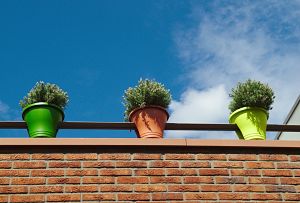How to Prepare & Move House Plants Across the Country
How to Book a Mover

If you're planning to move a slate pool table you should consider hiring professionals movers who specialize in this area and are experienced as experts. But if you want to do it yourself with a help of friends, here are some tips for you.
How To Move a Pool Table
When you move from one home to another, you usually sort out your goods into two piles: the good pile and the junk pile. You need to clean your home from unwanted items before movers arrival. By getting rid of your junk, not only you will be saving money on a move, but you can also make money out of it.
How to Get Rid of Junk
Moving from a small town to a big city could give you the freedom to pursue your goals, discover fresh employment prospects, and partake in novel experiences that are unlikely to be found elsewhere.
Moving to a Big City
Families who receive housing vouchers through the federal Housing Choice Voucher program are free to relocate to any rental home in the United States using their rental assistance.
Moving to a Different State with a Section 8 Voucher
To pack and unpack your rental truck or mobile container, you can hire local movers with experience in doing so. Although this service is more expensive than doing it yourself, there are several advantages to hiring moving staff.
Movers To Pack and Unpack Moving Trucks
You can secure a smooth office move into your new location by using our office move checklist.
How To Organize an Office Move
We can assist you whether you need assistance moving furniture upstairs or downstairs. You can find moving assistance moving furniture and boxes within your home through our marketplace.
Furniture Moving and Rearranging Services
A little preparation goes a long way when packing a moving vehicle. Making a list of the arrangement in which items should be loaded on the moving truck ahead of time will help you reduce the stress on moving day.
How To Pack a Truck Yourself
Discover efficient ways and expert advice for keeping your indoor plants healthy throughout migration. Learn how to reduce stress, offer adequate care, and make the transfer as easy as possible, eventually optimizing the health and vitality of your cherished green friends.
Maximizing Plant Health during Relocation
Explore practical and compassionate approaches to help older people with their relocation. Get critically important suggestions and tools to promote a seamless transition, reduce stress, and provide the necessary support for an easy transition.
Assisting Elderly Individuals in the Moving Process
Tips for Moving Your Garden and House Plants

Houseplants make a home feel welcoming and warm. Plants may look perfect at home, but they can suffer during a long move. When you plan your move, you have so much to think about, and plants are one of the things that don't get proper care during the moving process. Most likely you want to take your houseplants with you to your new home, but not sure if they'll be able to make the journey, especially if it's a long trip. If you think they will not survive, then make sure you find a new home before you hit the road.
Can I Legally Move Plants From One State to Another?
Yes, you can relocate with your plants. But it's necessary to think about the circumstances under which the plants will be moved and whether they will be able to survive the transition. Leaving certain plants behind may be the best option if they cannot handle the stress of being moved. Additionally, it is crucial to research the laws of the state or nation you are relocating to because some plants might be deemed invasive species and are therefore prohibited from being brought across international boundaries.
The rules of the new state and the climate will determine if you should take your plants with you. Follow these instructions to prepare your plants for moving, so they can withstand environmental changes without withering or breaking.
Is Moving Process Stressful For Household Plants?
Changes in their surroundings, such as those in light, temperature, humidity, and water levels, can lead to stress. In addition, physically moving the plants—such as rattling them around in a car or shoving them into boxes — can harm their roots and leaves.
Moving-related stress may have an impact on the plants' development and wellbeing. It is recommended to relocate plants in the cooler months, if feasible, to decrease the strain on them during a move.
The Recommended Time is During the Dormant Season
Timing is crucial when moving plants, and understanding their dormant period is key. Late fall or winter is often the ideal time for relocation, as plants are in a state of dormancy during this period. Deciduous trees and shrubs, for instance, are best moved when they have shed their leaves and are conserving energy for root development. Similarly, perennial flowers and grasses can be relocated during their dormant phase, minimizing disruption to their growth cycles and aiding faster establishment in the new location.
However, it's important to remember that not all plants have the same dormant period. Some may have specific seasonal requirements or unique growth patterns. By researching your plants' specific needs, you can determine the most suitable timing for their move, ensuring a successful and less stressful transition.
You Shouldn't Move Some Plants Across State Lines
Some plants shouldn't be transported to another state because they can be invasive species, which can grow quickly and compete with native plants for resources. The cost of controlling invasive plants can be high and they can seriously harm natural ecosystems.
Some plants may also harbor pests or viruses that harm crops and native plants. Moving plants from one state to another may unintentionally spread these pests or viruses, which could have a serious negative impact on regional agriculture.
Prepare Your Plants
A few weeks before the move, remove the dead branches and give them a good pruning. Eliminate weeds, bugs, and dust a week before your move. Take plants out of their heavy pots and place them in lightweight plastic pots to make transporting easier.
Finding crates or large boxes that will fit your plants is the first step in transporting them across the country. To prevent the boxed-up plant from moving around too much throughout the journey, line the box with bubble wrap. You'll probably have to set the plants on the floor in the backseat of your vehicle.
Make sure you are aware of the climates into which you intend to relocate them before beginning any of these activities. Moving a plant that requires a lot of sunlight to an area with little to no sunlight doesn't make much sense.
One week before the move, you can start acclimating your indoor plants to the conditions they will encounter during transportation. This involves gradually exposing them to lower light levels, reduced watering, and slightly lower temperatures to prepare them for the move.
Check Your State Regulations
If you are moving from state to state, federal and state laws may be involved. Sometimes your plants aren't allowed to cross the state borderline. California, Arizona, and Florida have the most restrictions on bringing plants into the state. Most states require transported plants to be grown indoors in sterilized potting soil. You can buy sterilized potting soil at local nurseries or garden centers. It would be best to contact your local U.S. Department of Agriculture office to check on specific regulations.
Examples of plants whose interstate transportation is often restricted or outlawed include:
Bamboo
Kudzu
Giant hogweed
Japanese knotweed
Purple loosestrife
Wild parsnip
It's usually a good idea to confirm that the plants you wish to move are not restricted or prohibited by contacting the local authorities or the USDA.
Check Soil For Bugs and Diseases
Check your plants and soil for bugs or any kind of disease your plant might have. You would want to take steps to rid your plants of these bugs or mildew before your move. You don't want them in your new home.
Pack Your Plants
Leave your plants as the last things to pack, so that they don't get crushed too long in moving boxes, and they'll be the first things unpacked at your new home. You can manage the environment much better in your car than if they are just stuck in the back of a moving truck. Pack them snugly in sturdy boxes, line them with plastic and place your plant inside. Make sure that the plastic is not tied together too tightly. If it's a long-distance move, make sure plants are moist. Plants can usually survive for 7-10 days without water.
Moisture Matters
When transporting plants, moisture management is key. While it is critical to sufficiently water plants prior to the move, it is also critical to prevent overwatering them. Over saturated soil can make plants heavier and more difficult to carry, increasing the risk of damage during transportation.
Succulents and cacti, for example, have developed to flourish in arid climates and are particularly sensitive to excess rainfall. It's best to wait a few days before moving them to ensure their roots aren't excessively wet. Plants with high moisture requirements, such as ferns or tropical foliage, on the other hand, may benefit from a thorough watering before the move. This ensures that they have enough moisture reserves to endure the stress of moving
Moving Companies Will Not Move Plants
Plants are considered perishable, and the majority of moving companies will not load plants on their trucks if it's a cross-country move. They are too fragile and are very likely to suffer from the move. Most indoor houseplants can not survive temperatures below 30 or above 100 degrees. Some professional movers, even if they move your plants, will not cover damage to plants. Ask your moving company if they have any restrictions.
Ship The Plants
All major transportation companies, such as FedEx or UPS, ship plants, but each company has distinct requirements. When shipping your plants, use the fastest option available. Usually, these companies, provide you guidance on how to best safeguard your plant before shipping it. When packing it, take the weather into account as well. You might want to insulate the cargo if it needs to travel through freezing temperatures.
Take Cuttings
If you can't take your plants with you, consider taking cuttings. This is a good option for your favorite outdoor plants. Purchase some floral tubes, fill them with water, then cap them.
Help Plants to Recover
The plants should be unpacked as soon as possible after arrival. Make sure to remove the plastic immediately, take them out of their boxes and give them some water. Place plants in pots that are the same dimension as the ones you had before moving. Plants should not be moved until they have acclimated.
Sometimes houseplants don't like the jolt of moving. They will need time to adjust to feel more at ease and comfortable in their new surroundings.
Moving Services in Your State

About the Author:
Margarita Hakobyan is the founder and CEO of MoversCorp.com. She has published more than 300 articles about moving, storage, and home organizing, making her a moving specialist since she began writing about the moving industry in 2005.Copyright © 2024 Local Movers Corp All rights reserved 1-888-755-2212
